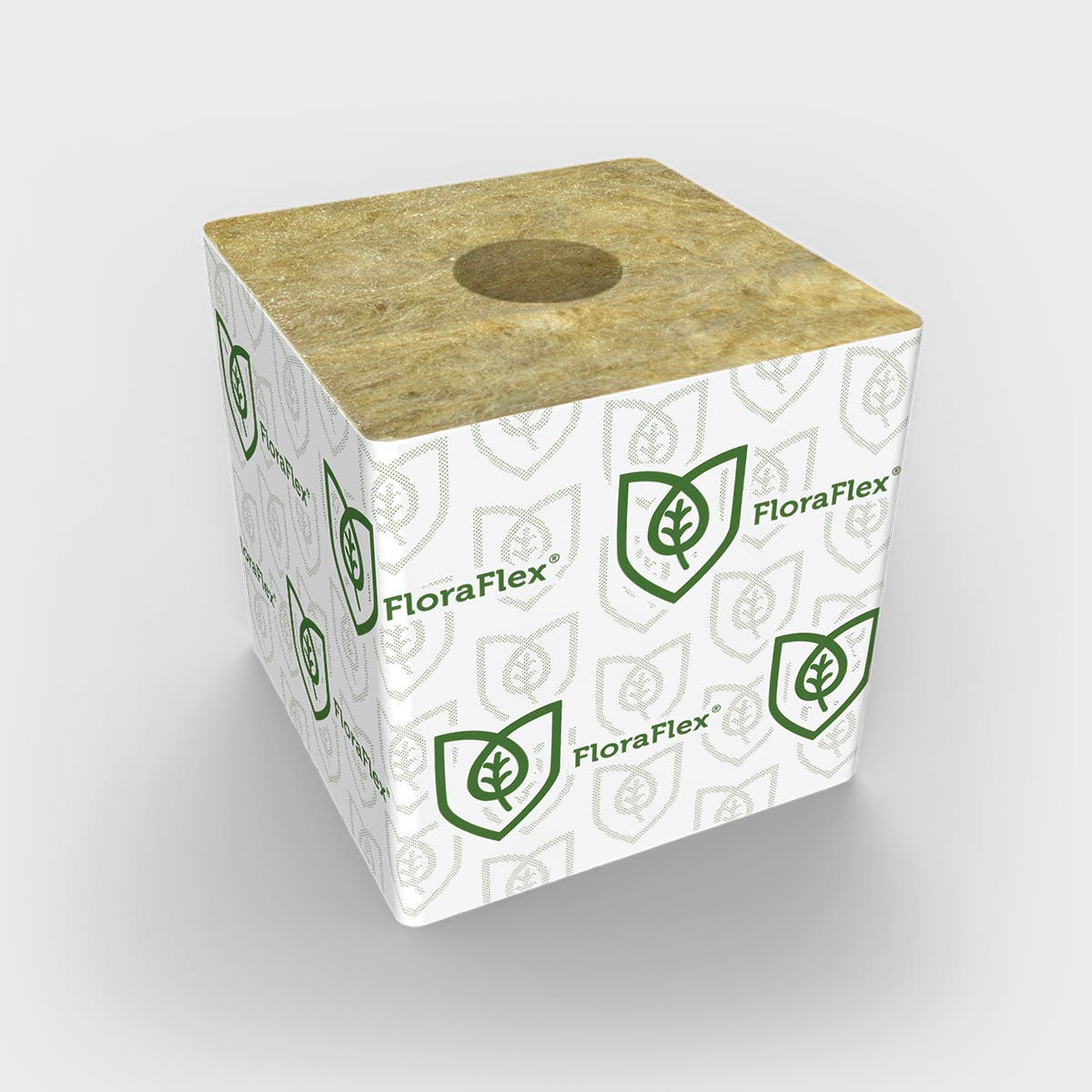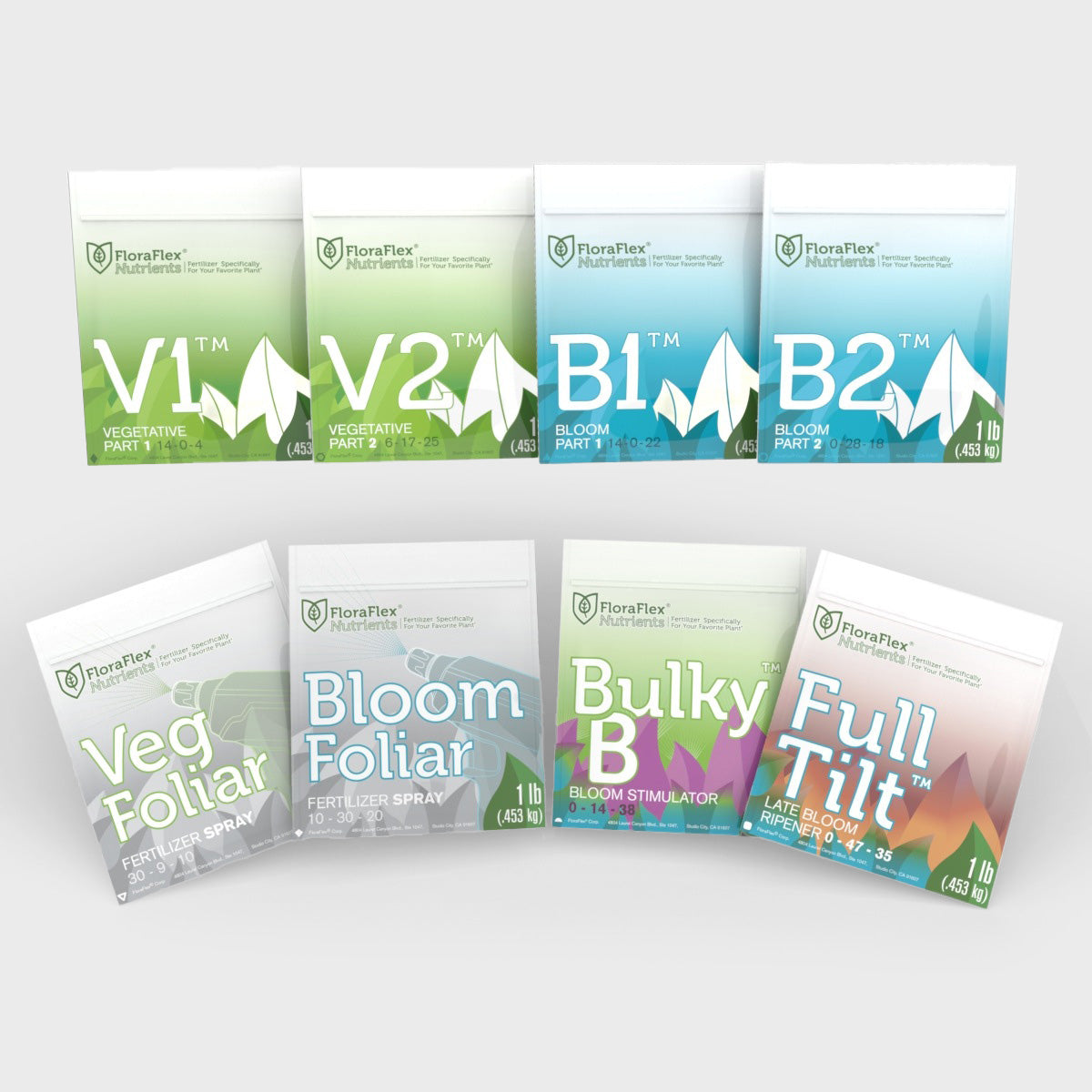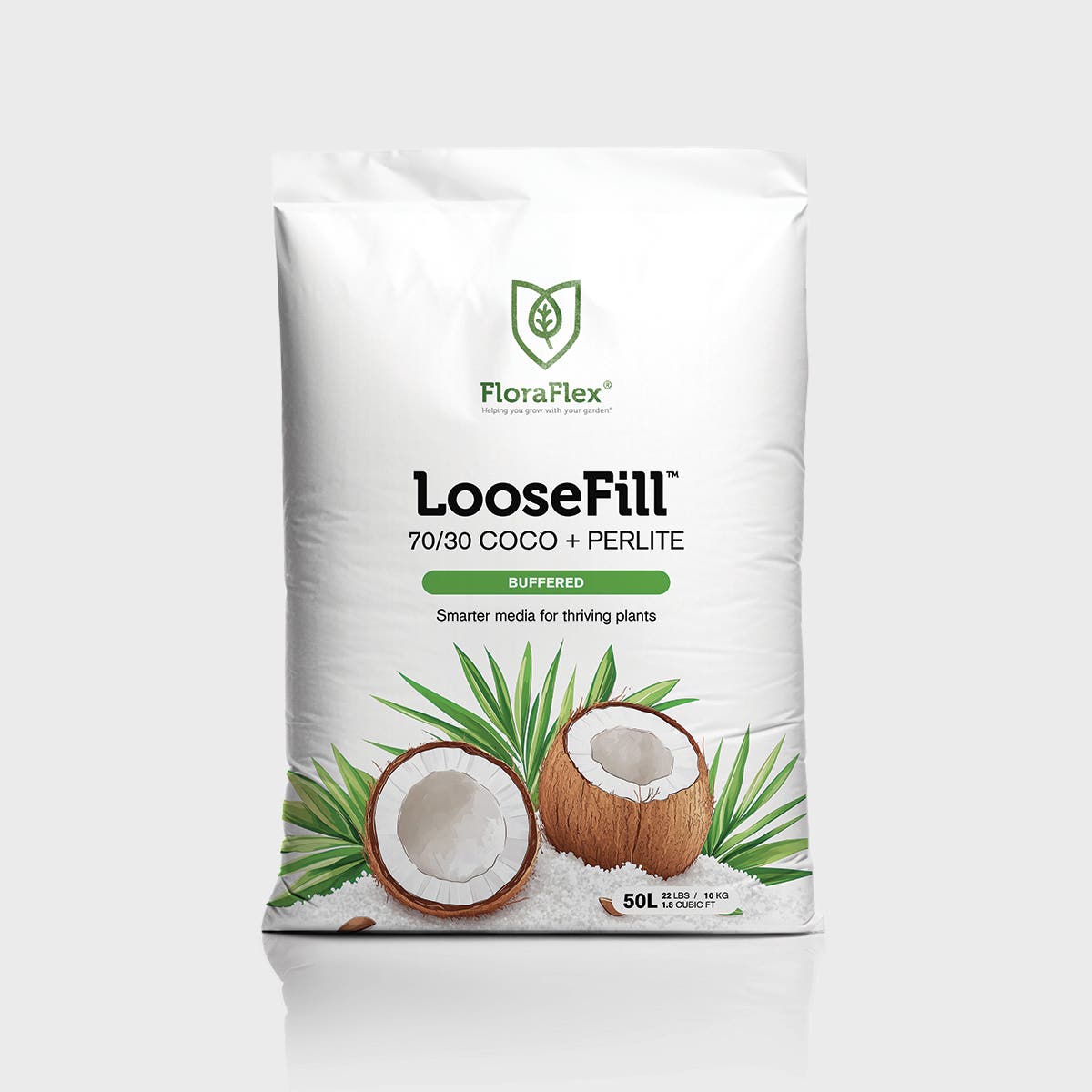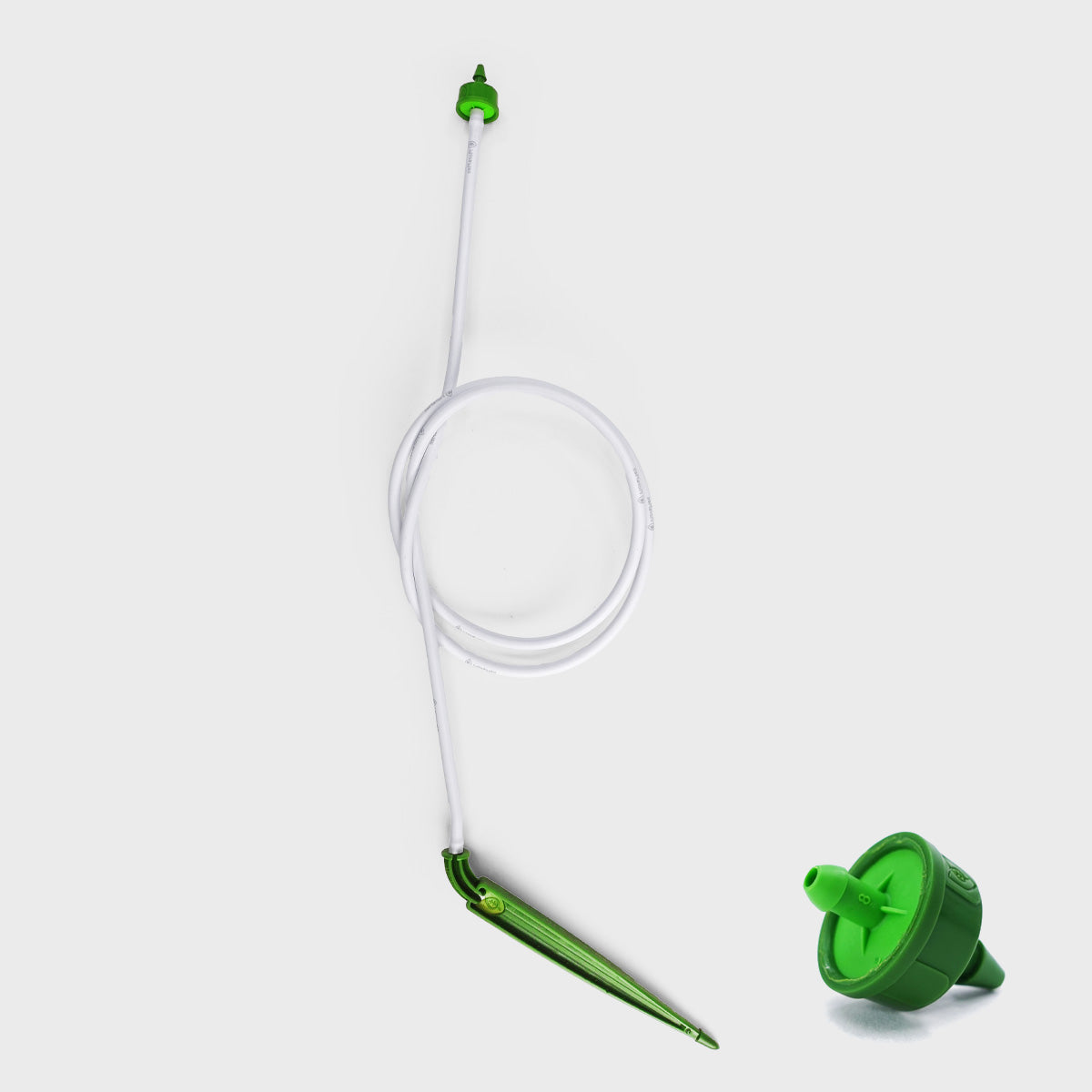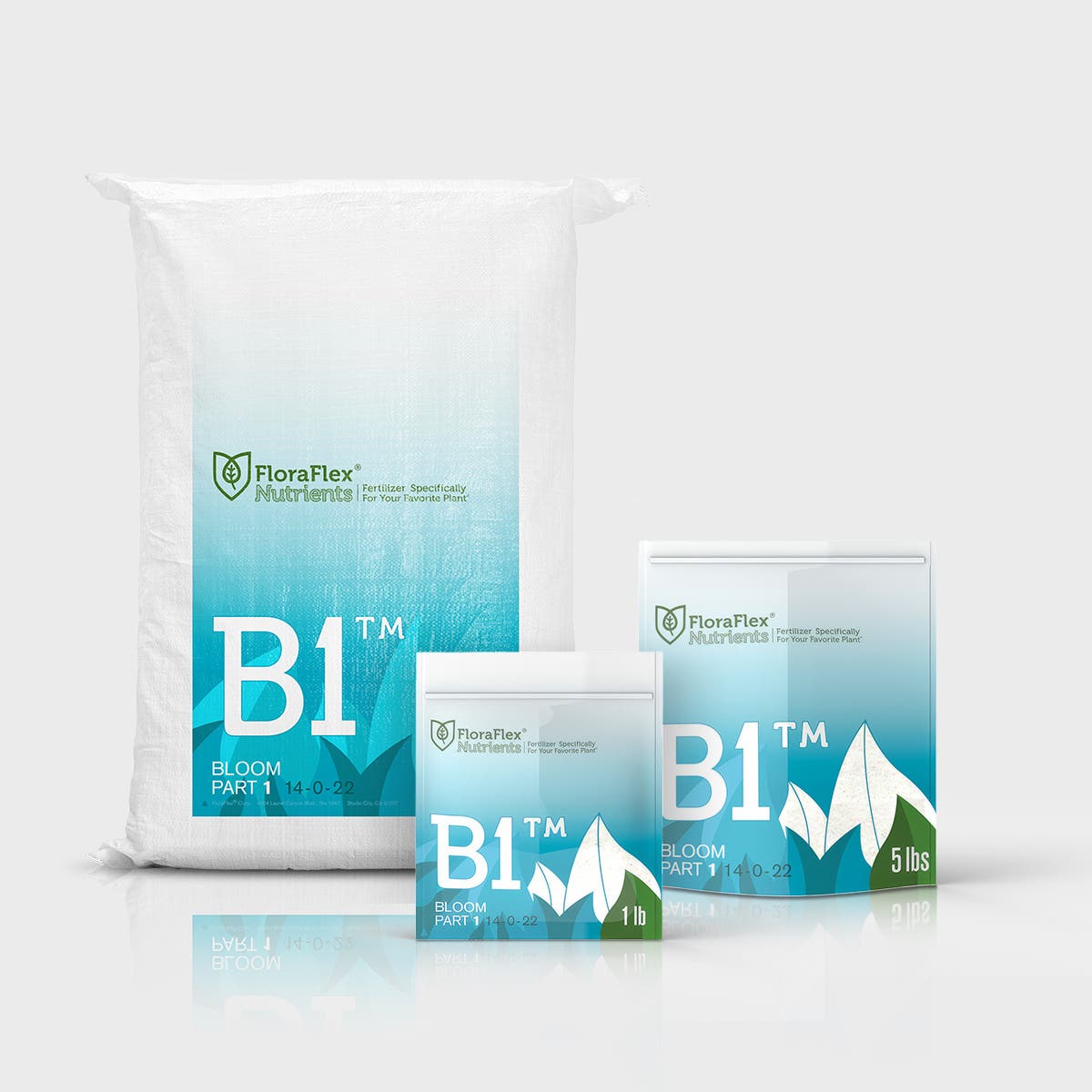Whether you’re scaling rooms or tending a single tent, great results come from a simple idea: start clean, measure what matters, and feed consistently. This guide walks through a modern, no-guesswork approach using the FloraFlex® nutrient system—built for today’s coco, rockwool, and precision drip workflows.
Build on a reliable base
The foundation is your base pair—V1™/V2™ for Vegetative and B1™/B2™ for Bloom. Balanced, two-part bases give you stable mixes and smooth transitions between phases, so you can focus on canopy management instead of constant corrections.
To plan your run, start with the official Feeding Charts & Schedules; they’re the simplest way to align EC and phase targets and keep your rooms on the same playbook.
Water quality, EC/PPM & mixing order
Great mixes start with clean water and a consistent routine. Add parts in order, stir to dissolve, then verify with a meter. If you prefer PPM, use the PPM↔EC conversion guide to keep everyone speaking the same language, or review the broader EC/PPM fundamentals if you’re onboarding new staff.
Running projections for a room build-out? The FloraFlex Nutrient Calculator article explains planning and precision so you can order exactly what you need.
Coco, rockwool, and modern fertigation
In coco and rockwool, consistency wins: stable input EC, measured runoff, and a repeatable dry-back window. The FloraFlex charts help you set phase-appropriate targets; then your irrigation cadence (hand-water or automated) enforces the rhythm. If your method favors higher oxygen and faster resets, consider pairing your program with airier media options and tighter pulse strategies; if you prefer slightly longer dry-backs, lean on mixes with greater water-holding characteristics and adjust pulse length accordingly. The key is to match media and feed so the root zone stays predictable.
Supplements & finishing well
Late flower is where many grows leave quality on the table. Full Tilt™ is designed for the finish—see the deep-dive on how it goes beyond a simple PK push with a balanced approach to ripening. Follow your schedule, monitor runoff closely, and let the plant complete its maturation curve.
Troubleshooting without guesswork
Even tight programs hit bumps. If leaves start “talking,” verify your input EC and pH, check environment and irrigation timing, then consult a clear reference. Start with the deficiency/excess analysis or the grow-room management guide to pinpoint likely causes and corrections.
From first mix to repeatable wins
Beginners: start with the official Feeding Charts, mix carefully, and log inputs/runoff so you can learn fast. Pros: standardize your rooms around the same charts, align EC targets with media and dry-backs, and lean on finishing discipline for consistent quality at scale. Either way, a clean, stable base—V1/V2 and B1/B2—makes the rest of the job easier.
- Plan: Feed Charts & Schedules and the Nutrient Calculator.
- Measure: keep EC/PPM and pH in range; use the PPM↔EC guide as needed.
- Finish: consider Full Tilt™ for late bloom, following your chart.




